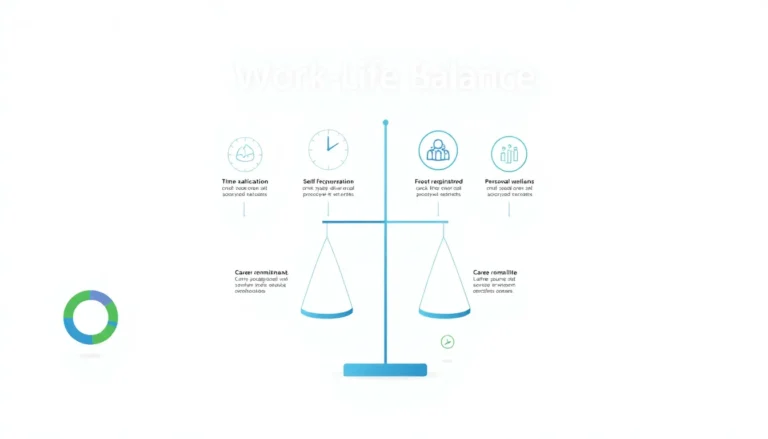Table of Contents
ToggleIn the ever-evolving world of technology, choosing the right programming language for machine learning can feel like picking the best pizza topping—everyone’s got an opinion, and it can get messy. With a plethora of options, from Python to R, the stakes are high. After all, no one wants to end up with a code that’s more cheese than substance.
Overview of Machine Learning
Machine learning involves developing algorithms that allow computers to learn from data. This field of artificial intelligence focuses on statistical methods enabling systems to make predictions or decisions without explicit programming. By analyzing patterns, models identify correlations within data sets, improving over time with additional input.
Various types of machine learning exist. Supervised learning requires labeled data for training, guiding the algorithm in making future predictions. Unsupervised learning, on the other hand, examines unlabelled data to discover hidden patterns or groupings. Reinforcement learning emphasizes learning through trial and error, utilizing rewards to motivate the system.
Applications of machine learning span numerous industries. Finance relies on algorithms for fraud detection and risk assessment. Healthcare uses machine learning for patient diagnosis and treatment recommendations. E-commerce platforms enhance user experience by personalizing product recommendations based on browsing behavior.
Choosing the right programming language for machine learning plays a crucial role in successful implementation. Python stands out due to its simplicity and extensive libraries, making it accessible for beginners and professionals alike. R excels in statistical analysis, appealing to data scientists with its robust visualization capabilities. Each language carries unique advantages tailored to specific tasks and user needs.
Data scientists and machine learning engineers frequently collaborate to develop effective solutions. Communication between these professionals ensures the selected programming language meets project requirements. Success in machine learning projects relies heavily on the integration of solid coding practices and the appropriate choice of programming language.
Criteria for Selecting a Programming Language

Selecting the right programming language for machine learning involves careful consideration of various criteria. Performance and efficiency play critical roles in determining suitability for specific applications.
Performance and Efficiency
Speed significantly affects the training and execution of machine learning models. Languages such as Python offer ease of use, but performance often becomes a concern for large datasets. Alternately, languages like C++ excel in speed, allowing for faster algorithm execution. Memory management also matters; efficient use of resources can lead to reduced training time. Thus, developers frequently prioritize efficiency to ensure models operate within acceptable time frames.
Community and Ecosystem
A strong community fosters collaboration, support, and shared resources. Python boasts a large community that actively contributes to numerous libraries, such as TensorFlow and PyTorch, enhancing its capabilities. R also has specialized communities focusing on statistical analysis and visualization, which can be beneficial. Resources such as forums, tutorials, and documentation play crucial roles in assisting developers. A rich ecosystem encourages continuous learning, offering tools and frameworks that ease machine learning processes.
Top Programming Languages for Machine Learning
Selecting the right programming language for machine learning significantly influences project success. Several prominent languages excel in different aspects of machine learning.
Python
Python stands out due to its simplicity and versatility. With numerous libraries such as TensorFlow and PyTorch, it facilitates rapid development. The syntax is user-friendly, catering to beginners and experts alike. Data manipulation with libraries like Pandas enhances data preprocessing efficiency. Strong community support empowers developers with extensive resources and online help.
R
R excels in statistical analysis and data visualization. Its specialized packages, like ggplot2 and dplyr, simplify complex data visualization tasks. Researchers prefer R for its robust statistical capabilities on large datasets. The language’s emphasis on data science makes it a top choice for academic applications. Integration with machine learning frameworks supports seamless implementation of various ML algorithms.
Java
Java offers portability and performance, making it suitable for large-scale applications. Its strong type system enhances code reliability, appealing to enterprises. The vast ecosystem includes libraries like Weka and Deeplearning4j for machine learning tasks. Multithreading capabilities enable efficient processing in complex algorithms. Popularity in large systems ensures a wealth of resources for developers.
C++
C++ is renowned for its speed and memory management capabilities. It allows deep optimization, making it ideal for performance-critical machine learning applications. Libraries such as Shark and Dlib support efficient algorithm implementations. Advanced users benefit from fine-tuned control over hardware resources. The language’s application in high-frequency trading underlines its efficiency in real-time processing tasks.
Emerging Trends in Programming Languages for Machine Learning
Recent developments in machine learning programming languages highlight shifting preferences and advancements. Python continues to dominate due to its extensive libraries and user-friendly syntax. Improvements in frameworks like TensorFlow and PyTorch enable faster model training and deployment.
Data scientists increasingly adopt Julia, a high-performance language designed for numerical and computational analysis. Its ability to handle large datasets efficiently makes it appealing for complex machine learning tasks. Similarly, Rust rises in popularity for its focus on performance and safety, addressing critical issues faced by developers.
The trend towards integrating multiple programming languages is noticeable. Many machine learning platforms support hybrid approaches, combining Python for prototyping with C++ for deployment. This method leverages Python’s ease of use and C++’s efficient execution, enhancing overall project performance.
Growth in low-code and no-code platforms also influences programming language selection. These platforms enable users without extensive programming experience to develop machine learning models. As a result, greater access to machine learning capabilities becomes possible for diverse industries, from finance to healthcare.
Additionally, increased emphasis on model interpretability drives interest in languages that facilitate transparent algorithms. R, noted for its data visualization strengths, adapts well to this demand, allowing data scientists to present insights effectively. Keeping pace with trends leads to informed choices in programming languages for machine learning applications.
Choosing the right programming language for machine learning is crucial for success in any project. Each language brings its own strengths and weaknesses that can significantly impact performance and efficiency. With Python leading the way for its simplicity and extensive libraries R remains a strong contender for statistical analysis.
As trends evolve data scientists are exploring languages like Julia and Rust for their performance benefits. The shift towards hybrid approaches and low-code platforms is making machine learning more accessible. Staying informed about these developments will empower developers to make strategic decisions that align with their project goals. Ultimately the right choice can enhance the effectiveness of machine learning solutions across various industries.







